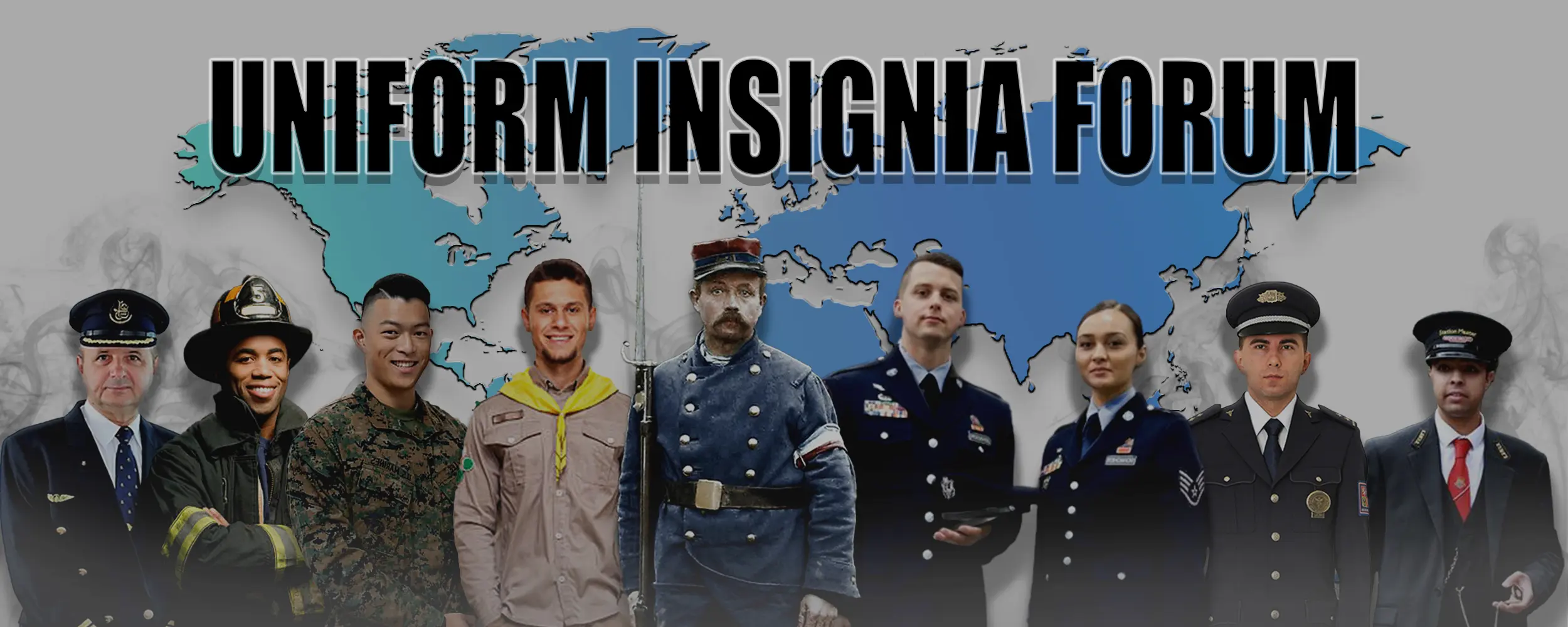That's probably a joke, but my question is serious.
I've noticed that several countries have two grades of lieutenant and a grade of captain, or an ensign, a lieutenant, a captain grade. Others have three lieutenants and a captain, an ensign, two lieutenants, and a captain grade, or two lieutenant and two captain grades. I could have sworn I saw the one ensign, three lieutenant, and two captain grades in the same military, but I'm not sure ...
Anyhow, the question is why?
Most of these were from the American continent, but there are European examples as well, so I don't think it's the size of the military or whether they are a conscript or professional one. I could kinda see one extra one as a promoted-from-the-ranks or just-commissioned designator, so is that it? Some militaries get away with just two (Spanish Army and British Navy,) so I'm curious why add more?
-
Medic_in_Uniform
- ADMINISTRATOR

- Posts: 409
- Joined: Sun Jan 07, 2007 7:33 pm
Re: An ensign, three lieutenants, and two captains ...
I guess it's all a question of history and tradition -- and these will, of course, vary from country to country.
Most ranks and roles will date back to the origin of regularised standing armies with formalised command structures. Contemporary ranks will undoubtedly have changed somewhat from those early days in all countries but this is almost always a process of evolution from one era to another.
To be honest, the Wikipedia entries for the army ranks of "Lieutenant" and "Captain" do a reasonable job of describing the background to this so I won't try to re-write it myself.
Here are the links:
[url]http://en.wikipedia.org/wiki/Lieutenant[/url]
[url]http://en.wikipedia.org/wiki/Captain_(armed_forces)[/url]
There is also a generic link for "Captain," covering all uses of the term:
[url]http://en.wikipedia.org/wiki/Captain[/url]
Hope that helps!

Most ranks and roles will date back to the origin of regularised standing armies with formalised command structures. Contemporary ranks will undoubtedly have changed somewhat from those early days in all countries but this is almost always a process of evolution from one era to another.
To be honest, the Wikipedia entries for the army ranks of "Lieutenant" and "Captain" do a reasonable job of describing the background to this so I won't try to re-write it myself.
Here are the links:
[url]http://en.wikipedia.org/wiki/Lieutenant[/url]
[url]http://en.wikipedia.org/wiki/Captain_(armed_forces)[/url]
There is also a generic link for "Captain," covering all uses of the term:
[url]http://en.wikipedia.org/wiki/Captain[/url]
Hope that helps!
Re: An ensign, three lieutenants, and two captains ...
Thanks. Already read the wiki pages awhile ago. Just found the situation odd.
- Dorward_Bis
- ADMINISTRATOR

- Posts: 168
- Joined: Tue Oct 01, 2013 12:57 pm
- Location: Ukraine, Kyiv
Re: An ensign, three lieutenants, and two captains ...
Well, the Soviet Army and, after the ruining of the Soviet Union, some of former Soviet republics, had and have THREE lieutenant's grades: Junior Lt, Lieutenant and Senior Lt, with only one Captain. This is a historical tradition - Junior Lieutenant was necessary to promote NCOs who had no a special military officer's education but hold the officer's position.
aka Dorward and Dmitry Belokurov
-
Eugen Pinak
- VISITOR

- Posts: 50
- Joined: Thu Jan 29, 2004 4:19 pm
Re: An ensign, three lieutenants, and two captains ...
Well, some traditions do look odd to the outsider :)Already read the wiki pages awhile ago. Just found the situation odd.
That's not true. The rank of Junior Lieutenant was necessary to distinguish between officers, graduated from ROTCs or wartime "shake'n bake" schools and officers, graduated from military academies (they were commissioned in the rank of Lieutenant). BTW, that's also an old tradition, coming from the Tsar's army days.Well, the Soviet Army and, after the ruining of the Soviet Union, some of former Soviet republics, had and have THREE lieutenant's grades: Junior Lt, Lieutenant and Senior Lt, with only one Captain. This is a historical tradition - Junior Lieutenant was necessary to promote NCOs who had no a special military officer's education but hold the officer's position.
As for commissioning from the ranks - it was always very limited in the Soviet Army (mostly for political reasons, not educational, I think). In early 1970th Soviet Army even chose to introduce new praporshik (= WO) category rather than admit more men from the ranks into the officer corps.
Return to “GENERAL DISCUSSIONS (Rank comparison, translation issues etc)”


